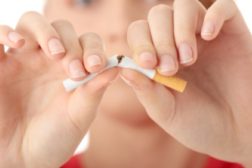Workplace Health
EPA releases final risk assessment on Trichloroethylene (TCE)
Agency begins process to address potential human health risks
July 3, 2014
How to quit smoking: Watch hard-to-watch CDC PSAs
New round of “Tips From Former Smokers” ready to go
June 27, 2014
Cigarette smoking among U.S. high school students at lowest level in 22 years
Latest CDC teen behavior survey also finds fewer fights, too much texting and driving
June 23, 2014
Never miss the latest news and trends driving the safety industry
eNewsletter | Website | eMagazine
JOIN TODAYCopyright ©2024. All Rights Reserved BNP Media.
Design, CMS, Hosting & Web Development :: ePublishing







